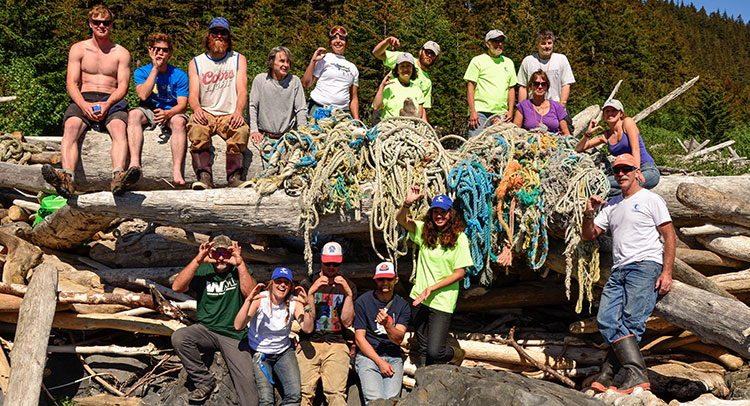Alaska 2014The scope of plastic pollution is difficult to convey. It exists on every shoreline in the world. Alaska’s rugged yet fragile coastlines are particularly vulnerable because of the dynamics of the Pacific Ocean’s circulation patterns. A full-scale response is underway by leaders such as Chris Pallister and his Gulf of Alaska Keeper (GoAK) crew. COI is proud to work alongside them.
There is not a shoreline on the planet immune to plastic pollution and the quantity and variety is staggering. On Alaska’s coast, plastic waste is measured in tons, and much of that is derelict fishing gear and domestic waste from vessels. GoAK is on the front lines in the battle to clean up plastics and this has profound implications for the environment here and on every continent, island, and rock touching the sea - indeed, even in the ice of the Arctic and Antarctic. Our hosts led by example, efficiently moving down the shoreline collecting civilization’s debris and bagging it for removal later.
Together we collected an unbelievable assortment and quantity of everyday items such as toothbrushes, dish soap bottles, toys, shoes, and clothing. The single most common item found was plastic water bottles, evenly divided between North American and Asian labels. Large drums and bottles containing unknown liquids reminded us of the toxic nature of the problem we were working to solve. In terms of weight the rope, nets, and floats used for fishing take the title. One particular trawl net made of polypropylene required over 5 hours to extricate from the woodpile it was tangled in, and it may have been over a half ton of plastic all by itself. It was estimated that our teams working together collected around twenty tons of plastic debris in the 5 days the weather allowed us to work. |
Project SummaryProject Name: Alaska Shore Cleanup
Focus: Plastic Pollution Research and Action
Number of Volunteers: 14
GROUPS INVOLVEDGulf of Alaska Keepers
COI
CHALLENGEClean up Alaska Shoreline
Identify Potential Waste / Plastic
SOLUTIONVisit Alaskan Coastline and bag up plastic trash
RESULTSBagged 20 tons of trash
Identified different sources of plastic
|
|
345 Lake Avenue, Suite G
Santa Cruz, CA 95062 Tax ID: 27-1898223 |
© Clean Oceans International. All rights reserved.


